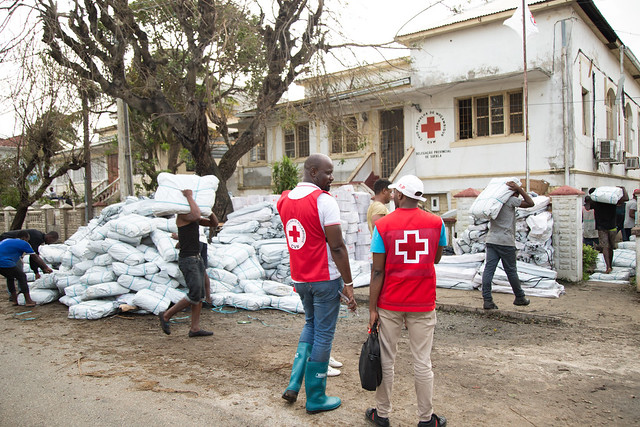Throughout history, people have shown remarkable ingenuity and resilience in the face of extraordinary challenges—recovering post-war, eradicating disease, fighting against inequality and oppression.
Today, the Global Commission on Adaptation is calling for that spirit and determination to respond to the extraordinary challenge of our time: climate change. Our new report calls on world leaders to accelerate climate adaptation to create stronger, safer, thriving communities and economies.
Climate impacts are here, now, devastating people and the economy. We must increase our ambition on mitigation. At the same time, we cannot afford to delay adaptation action and pay higher and higher prices in lives and livelihoods lost.
We need to profoundly change how we look at—and act on—adaptation. Our report shows the world how. Here are the four things you need to know about Adapt Now: A Global Call for Leadership on Climate Resilience.

A couple in Bangladesh plants chilies outside their climate-smart home. Photo by WorldFish/Flickr
1. Adaptation is a good investment.
Adaptation actions can be some of the most cost-effective investments a country, city or company can make. Our research found that the overall rate of return on investments in resilience is exceedingly attractive, with benefit-cost ratios ranging from 2:1 to 10:1, and sometimes even higher. We found that investing $1.8 trillion globally in five areas from 2020 to 2030 could generate $7.1 trillion in total net benefits. The five areas are early warning systems, climate-resilient infrastructure, improved dryland agriculture, mangrove protection, and more resilient water resources.
In addition to these avoided losses, we found that adaptation brings economic, social and environmental benefits. Consider the Thames Barrier, one of the largest moveable flood barriers in the world. The barrier helps protect 1.3 million people and $340 billion in property and infrastructure from floods. By reducing risk from climate impacts, it has also encouraged investment and helped create London’s bustling Canary Wharf commercial district. Mangrove restoration is another example: In places like Thailand and the Philippines, mangroves help protect coastal communities from deadly storm surges while providing critical habitat to local fisheries and tourism opportunities, boosting countries’ prosperity.
These multiple benefits of adaptation have largely been overlooked by decision makers. Better awareness of adaptation’s “triple dividend” makes the imperative to act even stronger.

2. Revolutions in understanding, planning and finance are necessary to accelerate adaptation.
With such great returns, why aren’t we seeing adaptation at scale? Because barriers—understanding who and what is at risk, short-term biases, institutional silos and existing power structures—stand in the way. We are calling for revolutions in these three areas to ensure that adaptation responses are more fully factored into decision-making at all levels in both the public and private sector.
A revolution in understanding will ensure that the climate risks societies and economies face are made visible and reflected in decision-making. A revolution in planning will improve how we integrate climate risk into policy and investment decisions, and how we implement solutions. And a revolution in finance will help mobilize the funds and resources necessary for scaling more climate resilient and cost-effective solutions.

3. Applying these revolutions to key systems affected by climate change will build a more resilient future.
The world needs to prioritize action in seven key systems in order to build resilience: food, the natural environment, water, cities, infrastructure, disaster risk management and finance. Our research offers actionable recommendations in each of these areas to unlock adaptation.
For example: Embedding nature-based solutions into how governments and business manage climate risk can cost-effectively build resilience. Mexico took this approach in identifying and designating “water reserves,” which cover more than one-third of the country’s river basins—nearly 50 million hectares. A mix of protected areas and wetlands, these reserves help maintain adequate downstream flows, protecting water supply for 45 million people in a changing climate.

A woman harvests rice in Nepal. Photo by Neil Palmer/CIAT
4. This is a key year for action.
We live in urgent times. The next 15 months—until COP26 in 2020—are critical to mobilize action on climate change. Through Commissioner commitments and in partnership with others, the Commission will devote the coming months to driving a set of Action Tracks that are essential to jumpstart the needed transitions.
Our Action Tracks include efforts to integrate climate risk into all aspects of national financial planning and decision-making, marshalling a doubling of the scale of agricultural research for climate resilience, and significantly increasing the amount of funding available to community-based organizations doing adaptation work on the ground. We will champion several Action Tracks at the upcoming UN Climate Action Summit. And we invite collaboration from all of society—governments, the private sector, civil society, and citizens—to join us as we take this agenda forward. Together, we can adapt our world.



